Apart from testing the GI of different rice lines in the lab (in vitro), GQ also performs clinical trials with human subjects (in vivo). On Monday, 4 interns (including myself) volunteered to participate. We skipped breakfast and had a glucose monitor placed on our arms. Then, we each received a sample of rice with different GI values. Over the span of 2 hours, we had to check our glucose level every 5 minutes. The higher the glucose level spiked up, the higher the GI value is. Unfortunately, my sensor may have been malfunctioning because I got readings below what the sensor could actually sense. The trial was successful for the others. Typically, this test would be done over the span of 10 days. For 8 of those days, participants would be given different samples of rice with varying GIs. For 2 days, they would receive a glucose drink (GI = 100). Since my monitor was not working, I only participated for a day.
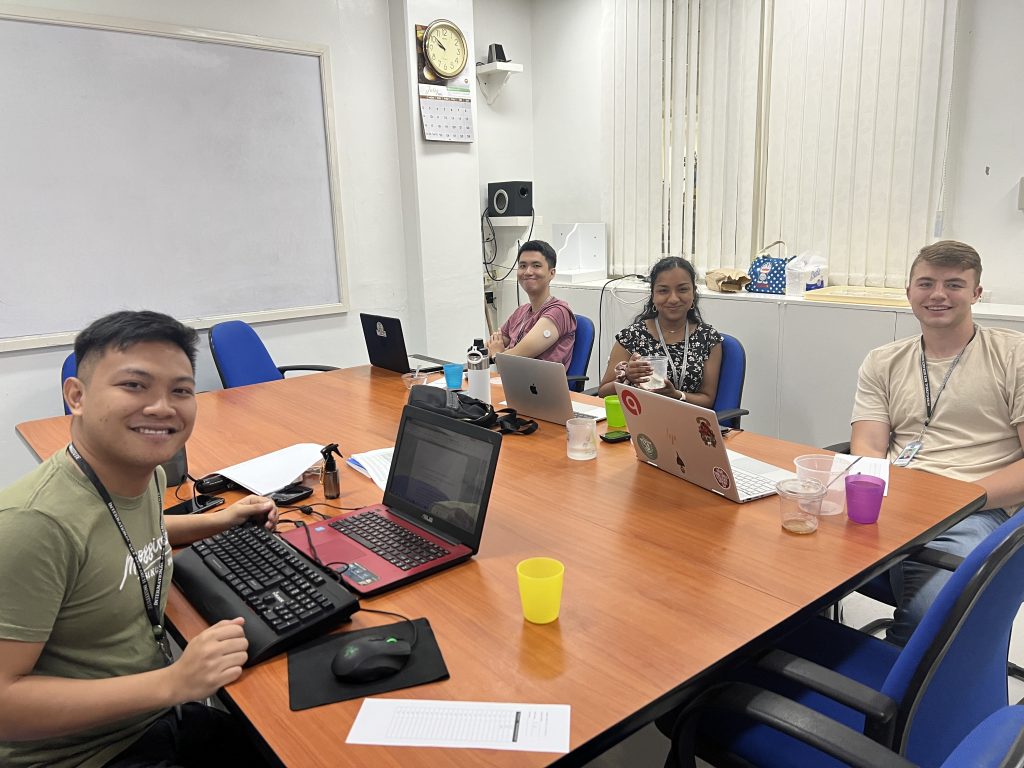
On Monday and Tuesday, IRRI hosted “Science Week” where different IRRI facilities joined together to present their progress. There were sessions running all day with plenty of snacks. Some of the topics included climate-resilient breeding programs, direct seeded rice (rice that isn’t grown in nurseries and then transplanted, but instead, is directly sown into the field), and biofortification strategies to enhance the zinc and mineral content in rice. One researcher also presented about golden rice, which is made to target vitamin A deficiency (VAD). According to the World Health Organization, VAD affects 250 million people worldwide; most of this population includes children (190 million) and pregnant women (19 million). Golden rice is enhanced with beta carotene, which is converted into vitamin A. It was created in 1999 using genetic engineering to add genes from a common soil bacterium and daffodils to rice. Australia, Canada, New Zealand, and the USA declared golden rice to be safe for consumption in 2018. In 2021, the Philippines became the world’s first country to grant approval for the commercial cultivation of it; Bangladesh is also trying to get approval. This genetically modified rice line has created a lot of controversies in the world. First of all, there is a lot of tension regarding the safety of GMOs. There is also the argument that golden rice will not be worth the price for its effects and that the populations who need it the most will not be able to access it. Its production is more expensive than traditional crops. Golden rice requires a lot of pesticides and herbicides that farmers may not be able to afford. Overall, most people claim that its production will support big businesses, not the consumers it is targeted towards.
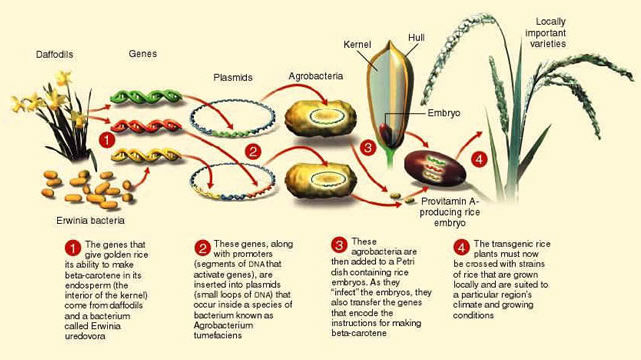
As a part of Science Week, GQ offered a rice tasting test between an ultra low GI (ULGI) rice line and golden rice. There was a survey that asked about the aroma, texture, taste, appearance, and overall experience the individual had for each rice sample. They also had to answer if rice was a part of their usual diet and how often they eat rice. For me, golden rice tasted much better than the ULGI rice. Since ULGI rice has higher amylose content, the texture is much harder. Golden rice tasted similar to white rice, and I could not tell the difference between it and the rice I eat back home or at the IRRI cafeteria, other than its golden tint. After everyone completed the surveys, I transferred the results into individual google forms. Almost everyone gave higher ratings for golden rice. Additionally during the presentation sessions, GQ was represented by Dr. Nese as he presented about the nutritional value of rice and diabetic friendly rice lines.
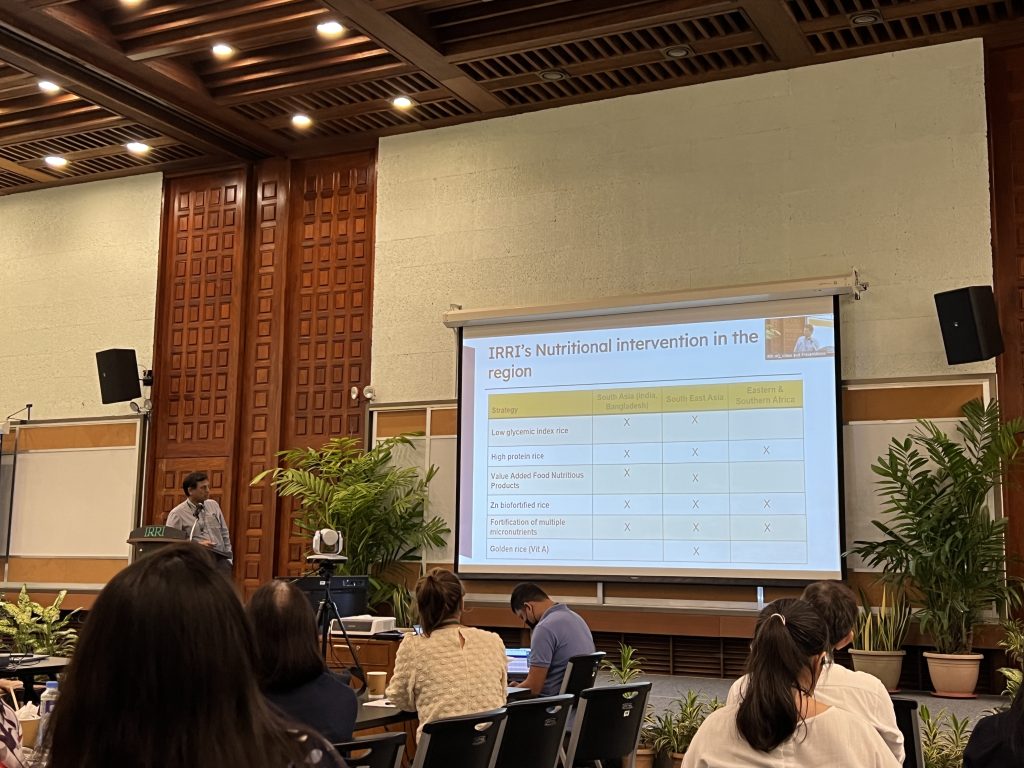
Throughout the week, I continued to work on more SEC calculations and data analysis. I also performed multiple runs of the GI experiment with Ate Ching and Ate Ana Rose. On Tuesday (our independence day), Jazz and I went out after work. Fun fact, July 4th was also supposed to be the Philippines’ independence day. On July 4, 1946, the US withdrew its sovereignty over the Philippines. However, the date is ironic because the US also conquered the Philippines on the 4th. After Spain surrendered in 1898, the Philippine-American War started in 1899. This ended with President Teddy Roosevelt declaring victory over the Philippines on July 4, 1902. In 1962, President Diosdado Macapagal changed independence day to the date when they received freedom from Spain, which was June 12, 1898. Whether this was the result of the U.S. Congress turning down a $73 million aid package to the Philippines or the rise of Filipino nationalism, there has been debates for the main reason for the change in date.
Back to our outing – Jazz and I got our nails done at Hiraya Spa. Prices were much cheaper than the US as a manicure and pedicure were only $7! The workers were super friendly and asked me a lot of questions. Afterwards, we went out to eat at a Vietnamese spot called Infusion. I tried Bánh Mì for the first time. It is a sandwich made with a baguette, pickled vegetables, and a meat of your choice. I also ate fresh spring rolls that were wrapped in transparent rice paper. All the food was delicious – one of my favorite places so far! Additionally, this is the first restaurant I have been to where they offered a box of disposable gloves to eat with. To get back home, I rode a tricycle for the first time, which is a common and cheap method of public transportation in the Philippines. It is a motorcycle that is attached to a side car. They are very small and low to the ground, but they can fit around 4 people, not including the driver. A ride usually costs around 80 pesos per person, which is less than $1.50. It was a bumpy but fun experience!
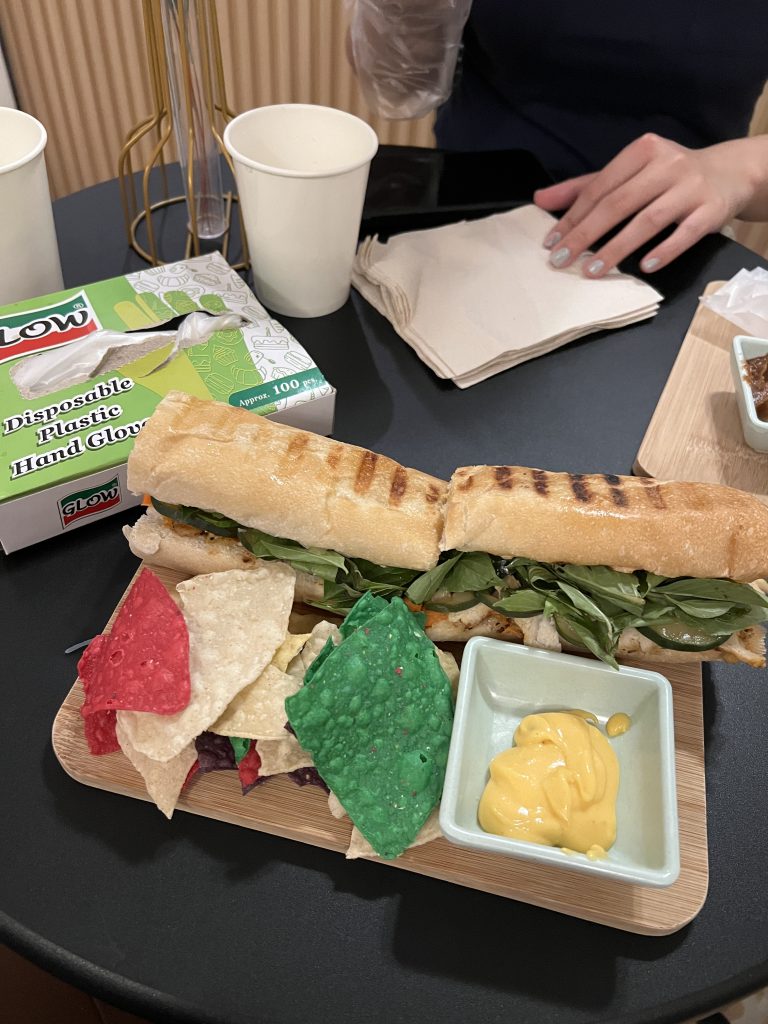

As a part of our internship, we are allowed to have 2 long weekends: one of our choice and the other one being our last weekend in the Philippines. Our group decided to take Friday and Monday off so we could fly to a different island. All 13 Philippine IWU interns planned to travel to El Nido in Palawan, which is a very popular tourist spot and a luxurious vacation spot for Filipinos. After lab on Thursday, all the IRRI interns packed our bags and headed for the Manila airport a little before midnight to catch our 4 a.m. flight. We weren’t able to fly directly to El Nido so we arrived at the Puerto Princesa airport after a 1 hour plane ride and rented a van. From there, it was an extremely bumpy 5 hour ride to our hostel in El Nido. After fueling myself with food and a quick nap, I met other tourists from countries all around the world. Our hostel had different games every night so we all played together.
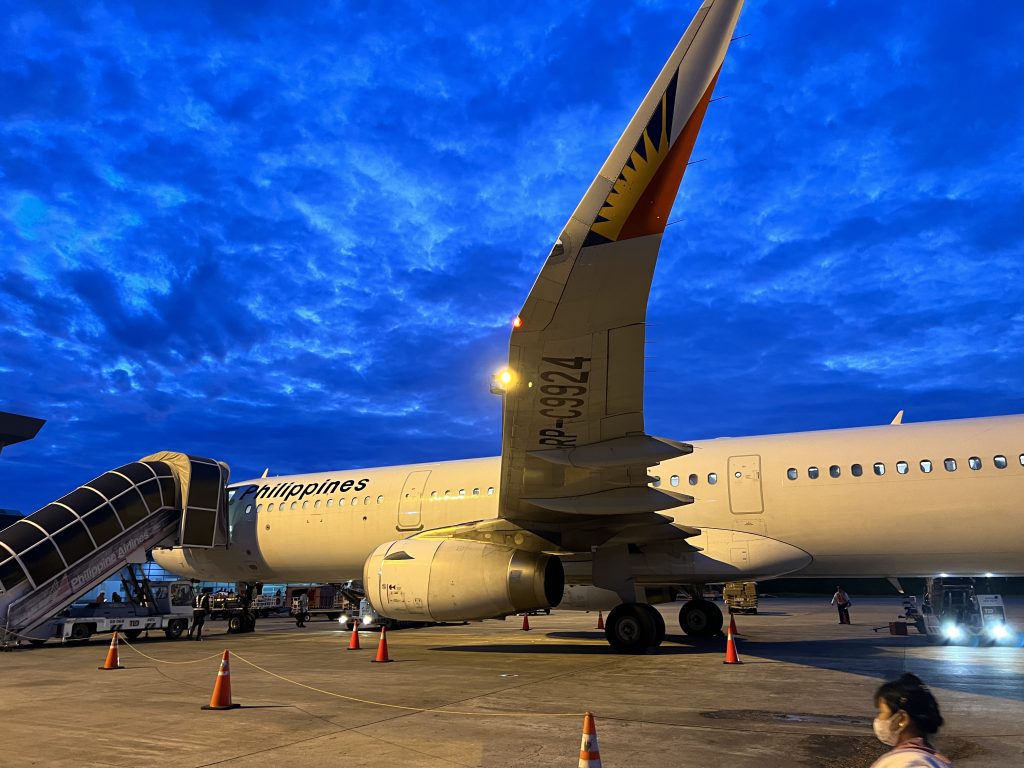
The next morning, all the IWU interns and a few others from the hostel went island hopping on a boat. This was one of the most breathtaking experiences I have had! Our first stop was Seven Commandos Beach, which was packed with tourists! A few of us played beach volleyball while the others cooled off in the water. There were many peddlers trying to sell jewelry, and I bought a beaded bracelet for less than $2. They were also selling a lot of snacks and drinks at the island. After sipping on coconut for a while, we headed to our next destination to snorkel: Shimizu Island. This was my very first time snorkeling, and it was pretty cool but a little scary being in the middle of the ocean! There was a lot of fish swimming around and coral everywhere. I wish I could have taken pictures underwater! **Speaking of pictures, please check out my gallery section for more El Nido pictures because I can’t show everything in this blog post**


Next, we sailed over to Big Lagoon – one of the most famous spots in El Nido. On the way there, the tour guides provided us lunch, which included chicken wraps and fruits. After we immediately gobbled this down, we stopped at the lagoon to go kayaking around limestone cliffs. Jessica and I paddled through the beautiful, crystal-clear turquoise sea. It felt surreal! As we weaved through the cliffs, we saw sea urchins and other cool creatures. We also parked our kayak against the cliff and relaxed in the shallow part of the water for a bit. While we were heading back to our boat, it started to drizzle. Thankfully, that was the only rainy part of our experience! Our last stop was Secret Lagoon, which was a smaller beach with less people. We played some more intense volleyball, and then later, we did flips in the water. Despite a few injuries and a few water-damaged phones, all of us had an enjoyable time exploring the beauty of El Nido!


The next day consisted of us mostly exploring the town in the afternoon. Since it is a touristy spot, there were a lot of souvenir shops and cute food places. From our hostel to the town, it was a 10 minute tricycle ride. Everything else was a walkable distance. I bought a freshly-made pineapple shake and a lot of souvenirs! For dinner, the IRRI girls, Semaj, and Chrishana went to a Japanese-Italian restaurant called Chef Mark Style. The crab and corn rolls I got were really good! Jessica, Semaj, and I continued to walk around the town in the evening. At one of the souvenir stores, there was a little girl who kept playing peek-a-boo/tag with us behind all the clothing racks. While walking along the streets, there were more bracelet vendors trying to sell them to us. I gave in and bought a bunch of bracelets. Once we got back to the hostel, Jessica and I had a mini kdrama night before we fell asleep.
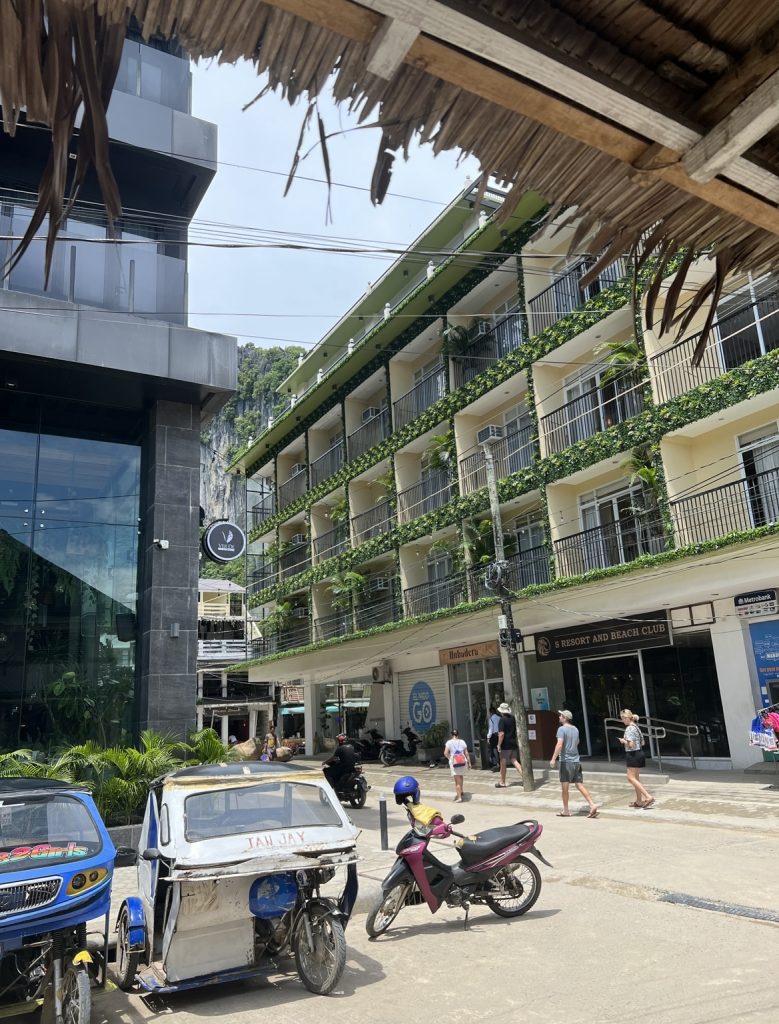
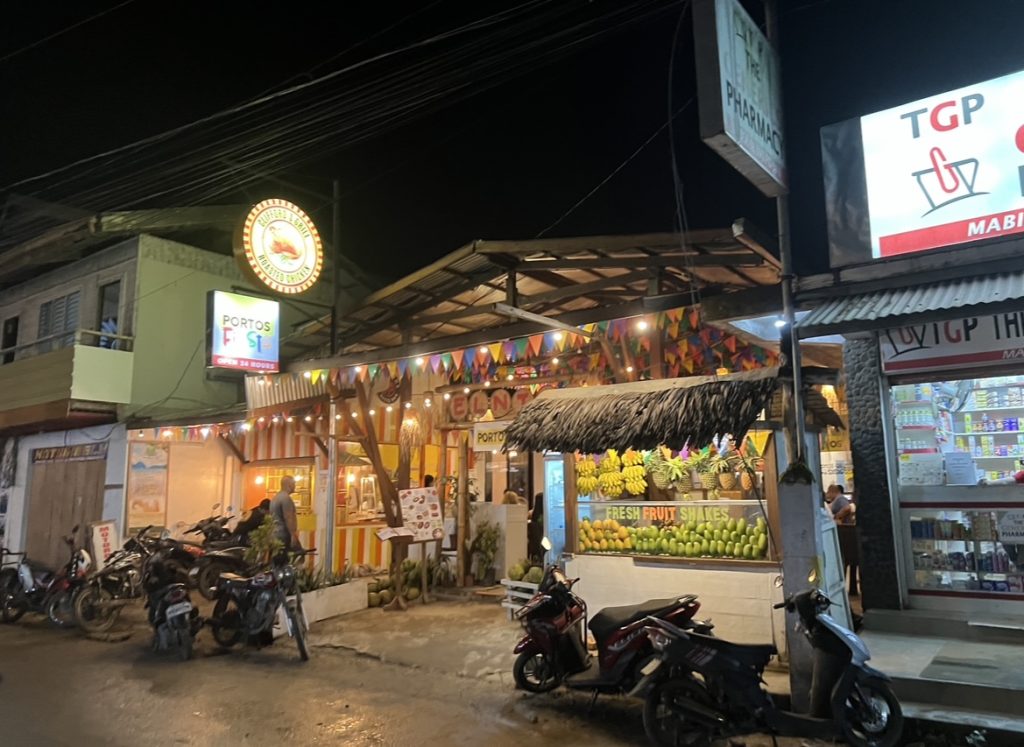
The rest of the El Nido trip will be included in next week’s blog so stay tuned!
